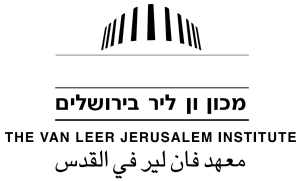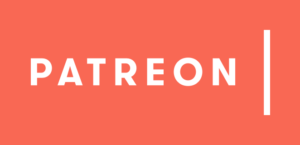Isn’t art always political, and when it is not, is it just bad art? And what is the role of art in shaping our political outlook, when the Israeli reality offers little escape from politics?
Joshua Simon, a writer, editor and curator, will moderate a round-table discussion dedicated to those issues and more, with leading artists, thinkers and cultural critics. He offers hosts Gilad Halpern and Dahlia Scheindlin a glimpse.
Sponsors
This season of the Tel Aviv Review is made possible by The Van Leer Jerusalem Institute, which promotes humanistic, democratic, and liberal values in the social discourse in Israel.
Show Your Support on Patreon
Receive extra segments, book discounts, and other patron-only perks by supporting the show on Patreon. Click to find out how a handful of dollars a month can help.
Noa Yafe, detail from Red Star, 2016–2017, Photo by Gal Deren








It is always heartening to hear such voices opening vistas to outsides. Here are some thoughts on what I heard. I just write this stuff, my way of using a mind with no outlet. I claim no value beyond that. However, I choose here because I see the Tel Aviv Review as an important enterprise. And because to date no one has told me to go away.
—
1. Speech and group formation.
Dogma closes down discourse by punishing and ostracizing other views, views which need not even confront the prevalent dogma but, just by being spoken, can open up further discourse. In dogma, certainty has been achieved, so deviation must be suppressed for safety’s sake. In this, much of science is dogma: one could not have gotten to the moon without nixing, formally or informally, much talk just plain wrong on issues of physics. In physics, this nixing occurs much earlier than the project at hand: people learn from errors, those incapable selected out, never seen in the productive world of projects.
Politics is much less certain as applied. More, political discourse is part of the social process of group formation, and such groups have ends distinct from being right or not. So too religion. Two religions can be incompatible yet both endure for the functions they serve adherents, this the core basis for religious tolerance in the West. If one adamantly believes only one pathway exists for eternal life and any other advocated will not harm just the speaker but bar future others from knowing the way, then banning alternatives is reasonable. Indeed, we force children to be vaccinated not for their own sake at margin, here in the US, but because they may otherwise act as vectors for those not making that choice. Materialism affecting third parties always limits choice. Science is by nature a constraint.
Religious tolerance at first removes salvation as such a third party containment question. The only way to do that consistently is to make choice absolute, which in turn reduces eternity to a personal matter–which is not what it was in early Christianity or early Islam (the call to prayer is inherently invasive by highlighting those not responding, although in a Western urban setting not so, because most are not expected to respond in any case). That is, political solution to the religious wars effectively altered the socially expressed ontology of faiths directly or by forcing them to see their response as one of perpetual muzzling; this last is how fundamental, evangelical Christians see the world, I think.
Religious talk enables groups capable of providing present goods, just like political talk. At times we find this uncomfortable. Nazi marchers undoubtedly aid one another; so too, say, Native American “Water Protectors.” Water Protectors seem less dangerous than Nazi adherents, but some oil companies, and even governments, may not think so. The solution is bright line criminalization of material acts, but the closer speech feels to mobilization the more uncomfortable the solution for some: consider “incitement” in Israel or threatening to kill the President in the US.
—
2. Captive audience.
The group formation solution to speech (enabling groups in internal support of members) fails when the audience is captive. So school prayer was found unconstitutional, but not prayer before city council meetings, for schools are formed of minors, defined as those incapable of protecting themselves, while one can simply enter a council meeting after the prayer (prayer opt outs fail because the student must make a potentially ostracizing public act; even sitting silently sends a signal one should be praying). So too forbidding Breaking the Silence audience among teens about to enter the IDF, even if once allowed. One can reply that schools propagandize incessantly for the IDF, so the captured audience should have an anodyne in BtS, but many opinions antithetical to what is taught exist, and it would be impossible to treat them all as anodyne. Partial solution lies in allowing an afterschool meeting with BtS, so voluntary, beyond even immediate student ostracism, but again the solution cannot be offered for all opinions. Student petition can offset this, but some lower bound must be set on needed signatories. Nowhere, school or not, is speech truly equally enabled across all content. Actually, apart from the high moral charge of BtS, there is more content range in school than say most workplaces, which is why we do not see student captivity as an inherent wrong: it is actually a chance for going beyond one’s background.
While opinion is distinguished from fact in school, the latter is theory charged much of the time. In consequence, evolution may be attacked while physics not, for evolution may interfere with core group maintenance outside the class (Adam and Eve in church) while physics enables group success in commerce (so seems universal for group success). Social science, though, is colored as opinion on matters of the moment. Thus the government will control social science in school by saying it is shielding its captive audience from raw conjecture, not fact, this tilting to enabling proper group formation skill once adult, which essentially places the State as filter of opinions used to form future groupings. This stand thus generalizes to social science outside of schools: as a matter of ruling policy, social science is seen as a contaminant when it is skeptical of approved group formation opinions.
The legislature, as will of the electorate, thus comes to shield offspring future electorates by policing acceptable group formation (in Israel, targeting left organizations by their funding source). The People morphs into a captive audience needing protection, this the fascist pull in any democracy, parents recreating themselves in their children, so electorate recreating itself via State policy.
Rights constitutionalism breaks this pull by denying primary ontology to the People: the electorate is a sum of individual acts, and so can be expected to change–if you let it change. Any culture directly expressing the centrality of a People will then be prone to this fascist pull unless blocked by rights protection. Speech is not for a healthy People, but rather for denying any People manifest as choosing electorate as uniquely healthy. The more violence people face, the stronger the imperative to create and preserve a healthy People. Both Israel and Palestine are then susceptible to authoritarianism as protecting a People.
—
3. Art and group formation.
Art is valuable for what can be said about it; listening to many artists who refuse to provide interpretations of their work (some say they mentally freeze when so trying), artists thrive by refusing to say what they are doing, although they will certainly take your money and appreciation. What they have to say will be said by others when they are absent–and in their next works destined to the same fate, as though a God speaks in riddles, inviting you to follow, but always just out of sight. This stand in art is certainly not historically universal (just take Reformation art), but rather a post modern consumer outcome: let the buyer not beware, but help define. Israel has a post modern art consumerism embedded in what increasingly seems a new version of the early modern State, God in Crown replaced by People as Ontology. The very process of post modern consumerism is easily seen as jeopardy for the People as Ontology. In themselves these artists can do nigh nothing. But their content policed acts as exemplar for the custodial nature of the People under protective captivity. To the extent that art escapes policing, the legitimacy of policing elsewhere may become suspect. Very often, I think, social policing is not about the target at hand but the necessity of showing policing to suppress all attempts to challenge before being voiced. In the language of jurisprudence, the State acts to chill the social environment so challenge will not emerge.
I am reminded of the brother of the French Crown just before the French Revolution. He acted as protector to poets and dissident writers, in themselves of no immediate threat. But his protection expanded an area of ambiguous immunity from State social policing, allowing greater verve in pushing the envelope of chanced speech outward; and as this envelope expands the plausibility of coalitions in times of crisis expands (so too the role of salons which enabled partnerships toward new thought, so latent coalitions in crisis). When crisis comes, perhaps beginning via some of these new possibilities, the State can find itself with a brush fire of opposition within the sub-elite (formerly from which the State recruited), either in passive non-aid or active blocking of State action. Simultaneous resistance amplifies courage to enter resistance or insert new demands; the State can then collapse almost at once. Similarly, one Russian anthropologist says that the USSR’s fall was lubricated by increasing willingness to express criticism, glasnost, which reduced fear of punishment for resisting orders. Before, resistance as speech left one isolate. Under glasnost, allies became conceivable. Crisis then allows the same kind of prairie fire of resistance which paralyses control of resources and people by the State. Visions of alternative governance, alternative lines of command, become believable; the State falls with almost no clatter. (This fear of multiple combustion I think underlies Defense Minister Lieberman’s recent declaration that MK Odeh of the Joint List should be in prison as a traitor.)
Overtly political art in the new early modern State has then two functions: group formation and maintenance among individuals otherwise lost in isolation, doing so by taunting the State apparatus that someday the latter’s social policing mechanism will fail. The art becomes valuable precisely because it may be quashed, either direct, in arrest, but more comfortably by denied funding and ostracism. Art thereby becomes a locus of rights which the State as protector of a healthy People must view as infection. Focusing on deviants, the greater people actually become more passive, no concern to them and not worth the possible conflict if even verbal support is provided. Dissident political art can then actually enhance State control overall. In both the French and Russian cases, the social economy of the State was under great distress. Absent this, the dissident throws himself into the air to come crashing down with no crowd of hands to stop the fall.
—
4. Political art as optional prophecy.
If one disbelieves the final ontology of People (something I think many Jews and Israeli Jews in particular naturally, because of their learned history and anti-Semitism, have difficulty doing), then the State as protector and molder of a healthy People must someday face an empirical wall, a failure of the world to match its asserted reality. The interviewer makes a striking suggestion, to my mind, on how art may function to prepare for such a day–by denying conflicts as articulated by the State, by, as he puts it, “betraying the loyalties of conflicts.” Simply, by asserting the lines of opposition drawn are false.
That, I think, is essential in the present Gazan border conflict. The national right, and really the vast majority of the population, see this conflict solely as with Hamas; marchers are either agents of same or dupes. But if one sees the Great March as a physically desperate attempt to employ a Return ideology for escaping a collapsing economy, marchers and their supporters embedded in Gaza are exemplifying social forces far beyond Hamas calculation. The population wants relief from a collapsed infrastructure. It can, then, be seen as an independent actor, addressed directly. Turning up the electric grid would be an act directed at this population, not a win for Hamas. By conceptually denying Hamas puppeteer control of events one can gambit new responses. First succor is more electricity, followed by international repair of the major grids–electric, water, sewage–giving residents a reason to think that a Home can be constructed where they live. But one can do none of this if Hams is the unique, and evil, actor in that land.
This is not an example from art, but I think the principle is the same as that of the interviewer. The State as protector of the healthy People must know the real lines of conflict; if these fail, then its role fails. Art can try to change the conceptual topography of conflicts to deny the State its monopoly of enforced understanding. (I say “State,” but really the economic and social actors feeding back into the State and thence to elections sustaining its ideology). At best, this provides relief for dissenters. But ultimately a topology must conform to the world or not. Alternatives must need (yes, both verbs) be sustained awaiting crisis. This, really, is what academics should do too. Just don’t kill one another to sustain kingdom on a very tiny hill.